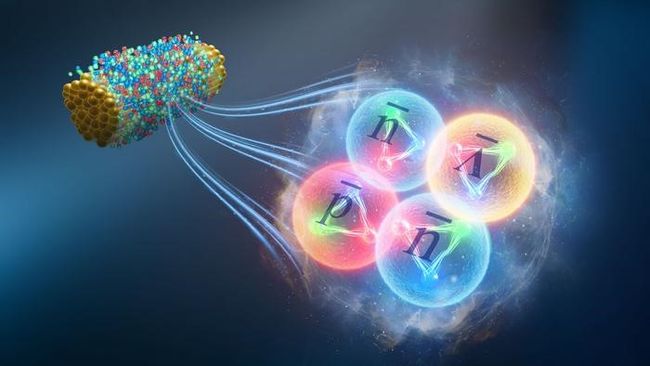Discovery of the heaviest antimatter particle may reveal secrets of our universe’s origins
The newly found antiparticle, called antihyperhydrogen-4, could have a potential imbalance with its matter counterpart that may help scientists understand how our universe came to be.
Researchers have identified the biggest antimatter nucleus ever seen by cosmic rays inside a particle accelerator.

This call antimatter nucleus, called as antihyperhydrogen-4, is made of one antiproton, two antineutrons and one antihyperon, which is a baryon containing a strange quark. Most recently physicists detected some of this antimatter in particle tracks left by 6 billion collisions at Brookhaven National Laboratory New York of the RelATivistic heavy ion collider (RHIC).
Through analysis of this strange particle, physicists hope to learn primary distinctions between matter and antimatter that will address the fact that our universe is made up of matter and despite what was thought at the creation of the cosmos, antimatter. The two researchers released their work in the journal Nature on August 21.
“As far as we know today, matter and antimatter are similar in that they both have a different electric charge, however, they have the same mass, they have the same life span and they interact in the same way,” said Junlin Wu, co-author of the study and a graduate of joint Department of Nuclear Physics, Lanzhou University, China, and Institute of Modern Physics, China. This issue is still open; why does the matter prevail in our universe?
The current models have it that the early universe was a soup of particles and their respective anti-particles which on meeting destroyed themselves.
In theory, this annihilation should have brought the total abolishment of non only matter but also antimatter. However, the scientists suggest that some other form of asymmetry which still remain unknown made more matter than anti-matter and thus eliminating the possibility of the universe’s self-destruction.
In order to find the root of such disparity, two new antimatter particles were synthesized through the use of a miniature big bang machine. The RHIC collider speeds up billions of heavy ions and bangs them together hard enough to create a plasma out of which the elements that were first created in the Universe briefly reappear, join up and then perish.
To find out new particles in this plasma, the physicists tracked the traced out paths as the ions decay or undergo transformation to form particles. From the paths of these collisions amounting to billions of collision events, the researchers were able to find around 16 antihyperhydrogen-4 nuclei.
When the team released hyperhydrogen-4 and its antimatter twin, antihyperhydrogen-4, into their simulation, they appeared to disappear almost as fast, the researchers discovered. However, they did not see any significant difference in the lifetime meaning the current model used in describing these particles is correct.
”If we observed a violation of this symmetry, then it would be compromising a good proportion of our present knowledge of the physical world” claimed study co-author Emilie Duckworth a Kent State University doctoral student in a statement.
The scientists’ next task is to compare the weights of these antiparticles with their corresponding matter and possibly this will shed light on how our world came to be dominated by matter.
Do not forget to share your opinion with us to provide you with the best posts !



0 Comments